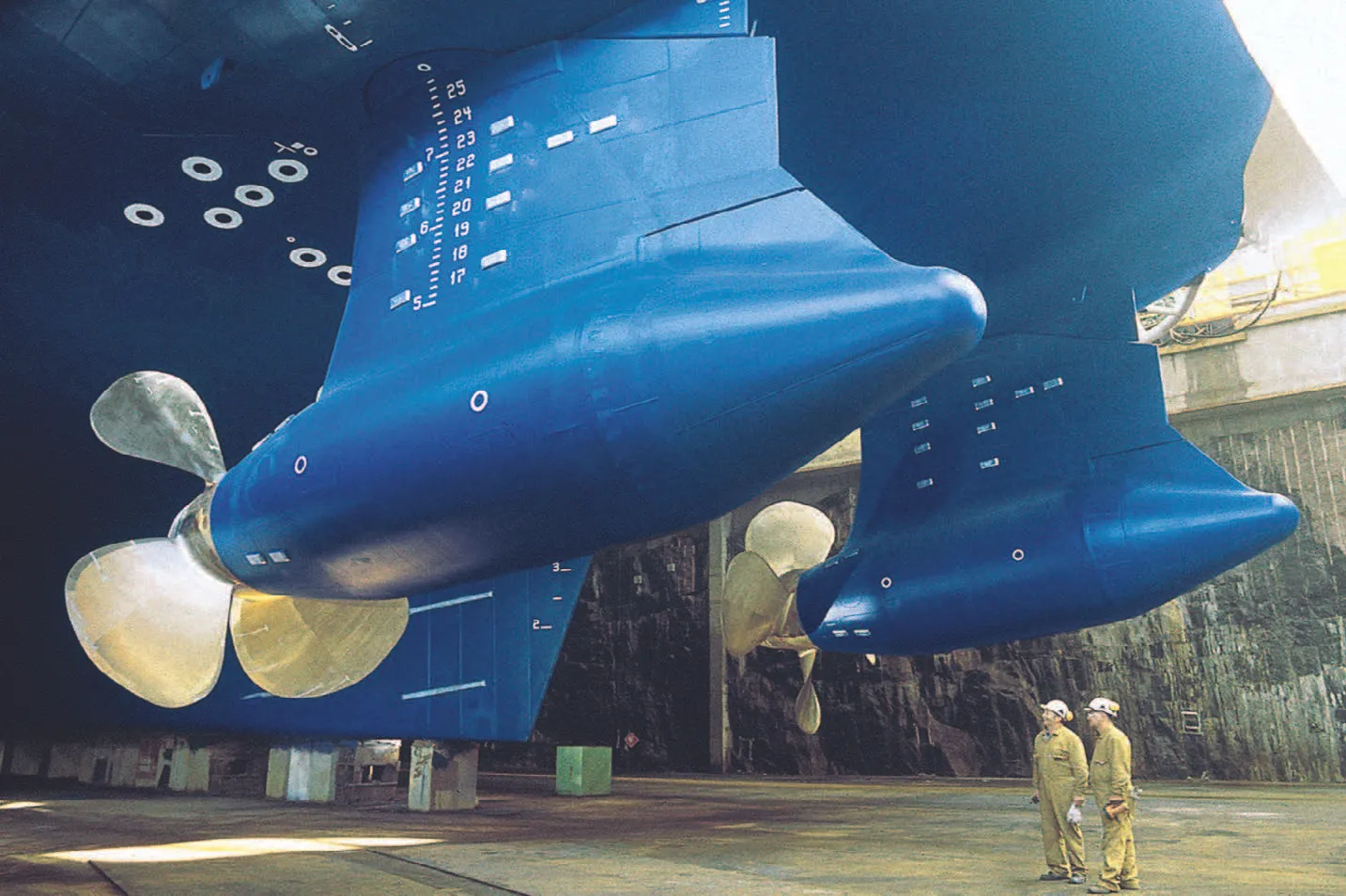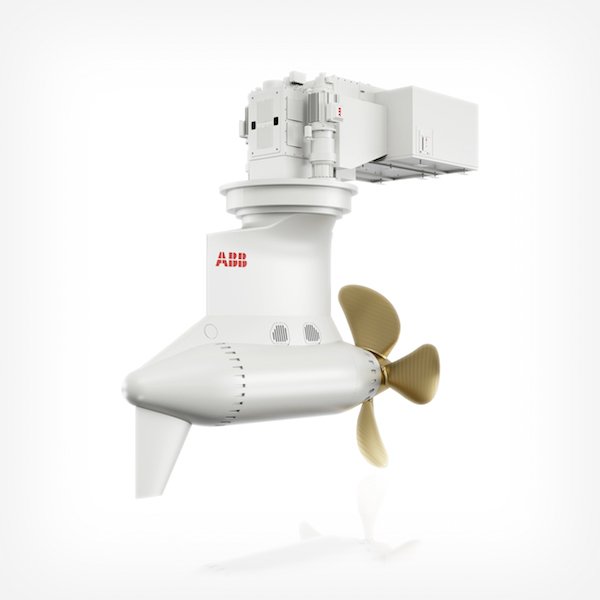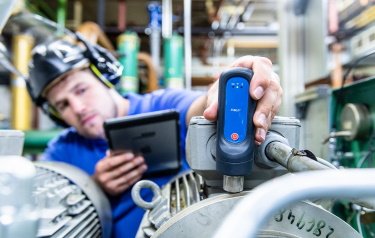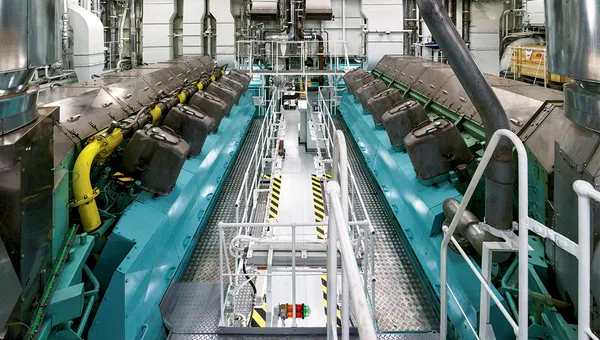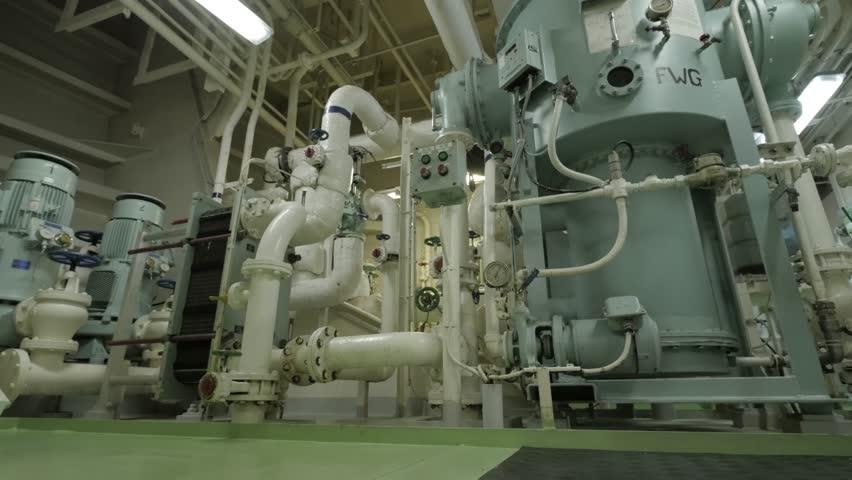
What happens when there is fault in FWG ?
- Faults in the freshwater generator reduce the performance of the system, reducing the quality and quantity of freshwater produced on ships.
- These irregularities must be identified and corrected immediately to ensure that the optimum performance of the freshwater generator is achieved.
Common Faults
1.Loss Of Vacuum Or Over-Pressure Of Shell
The shell pressure of the freshwater generator increases and the rate of freshwater produced decreases.
The reasons are:
a) Air leaks into the evaporator shell in large quantities and air ejector cannot cope.
b) The cooling water flow through the condenser is reduced or cooling water temperature is high.
This cause saturation temperature and hence saturation pressure within the condenser to rise.
c) Malfunctioning of the air ejector.
d) Flow rate of the heating medium increased and excess water vapour produced.
Since this excess vapour can not be condensed, the pressure of the shell increases or the vacuum drops.
2.Salt Water Carry Over
During the operation of the freshwater generator salt water can be carried over in large quantities.
This is called priming.
General reasons of the priming are:
a) Level of salt water inside the shell is high.
When water level is high agitation due to boiling occurs and salt water may carry over along with the vapours.
b) When there is a high level of water agitation due to boiling and salt water may be carried along with the vapours.
c) Rate of evaporation increased.
3.Gradual Increase In Level Of Brine
A constant level of brine must be maintained in the shell for the satisfactory operation of the freshwater generator.
Brine is the concentrated water of the sea after the release of water vapours.
This brine is gradually extracted from the shell. Typically, this is obtained by the combined air-brine ejector.
It extracts air as well as brine from the shell of fwg.
Any fault with the ejector or the brine extraction pump (in some models) causes the brine level to increase.
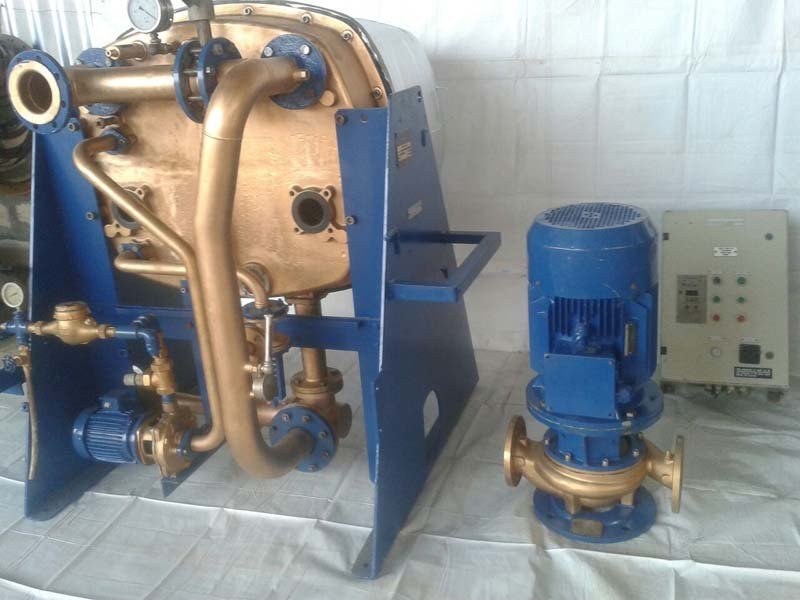
4.Increase In Salinity Of Freshwater
Possible causes are:
a) Brine level inside shell too high.
b) Leaking condenser tubes or plates.
c) Operation of evaporator near shore with contaminated feed water.
d) Shell temperature and pressure too low.
e) Increased solubility of CO2 generated from the salt water due to reduced sea water temperature.
This dissolved CO2 makes water acidic and conductivity of water increases.
Salinometer therefore shows increased salinity, which is a measure of conductivity and non-salt presence.
How Scale Formation Occurs In Fresh Water Generator
Fresh water generator performance reduces with scale formation because it causes reduction in heat transfer efficiency.
In FWG three scales are normally found these are :-
Calcium Carbonate, CaCO3
Magnesium Hydroxide, Mg(OH)2
Calcium Sulphate, CaSO4
The formation of calcium carbonate and magnesium hydroxide depends mainly on the operating temperature.And,the formation of calcium sulphate depends mainly on the density of the contents of the evaporator or the brine.The reaction takes place when the sea water is heated:
Ca(HCO3)2 ————> Ca + 2HCO3
2HCO3 ————> CO3 + H2O + CO2
If it is heated up to approx. 80 degrees Celsius
CO3 + Ca ————> CaCO3
If it is heated above 80 degrees Celsius
CO3 + H2O ————> HCO3 + OH
Mg + 2OH ————> Mg(OH)2
Hence, if the sea water is heated to a temperature below 80 degrees Celsius in the freshwater generator, the calcium carbonate scale will predominate.
The magnesium hydroxide scale is deposited when sea water is heated above 80 degrees Celsius.
If the evaporator content density is greater than 96000 ppm, the calcium sulphate scales are formed.But, brine density of FWG is normally 80000 ppm and less.Hence, the formation of scales due to calcium sulphate is not a problem.
That’s why It is recommended that the freshwater generator be operated at its rated capacity, not more.More water production than the rated capacity means a higher concentration of brine and a more formation of scale.Similarly higher shell temperatures result in hard scale formation that will be hard to remove.All of these together will dramatically reduce efficiency of plant.
How To Minimize Scale Formation
The formation of a scale in a freshwater generator can be controlled and minimized by continuous treatment of chemical.
Marine engineers prefer polysulphate compounds (such as sodium polysulphate) with anti-foam, which are commonly used on ships.
These chemicals reduce the scale formation of calcium carbonate and possibility of foaming.
The compound is
- non toxic,
- no-acidic,
and can be used in fresh water generator producing water for drinking purposes.
It will be continuously feed via a metering pump or by gravity to the feed line.
The quantity of chemical to be dosed depends on the capacity of the fresh water produced.
The main thing is that,this chemical doses is effective only on low pressure fresh water generators.
The temperature of the sea-water is less than 90 degrees.
In order to maintain performance of Fresh water generator chemical treatment to be religiously carried out.
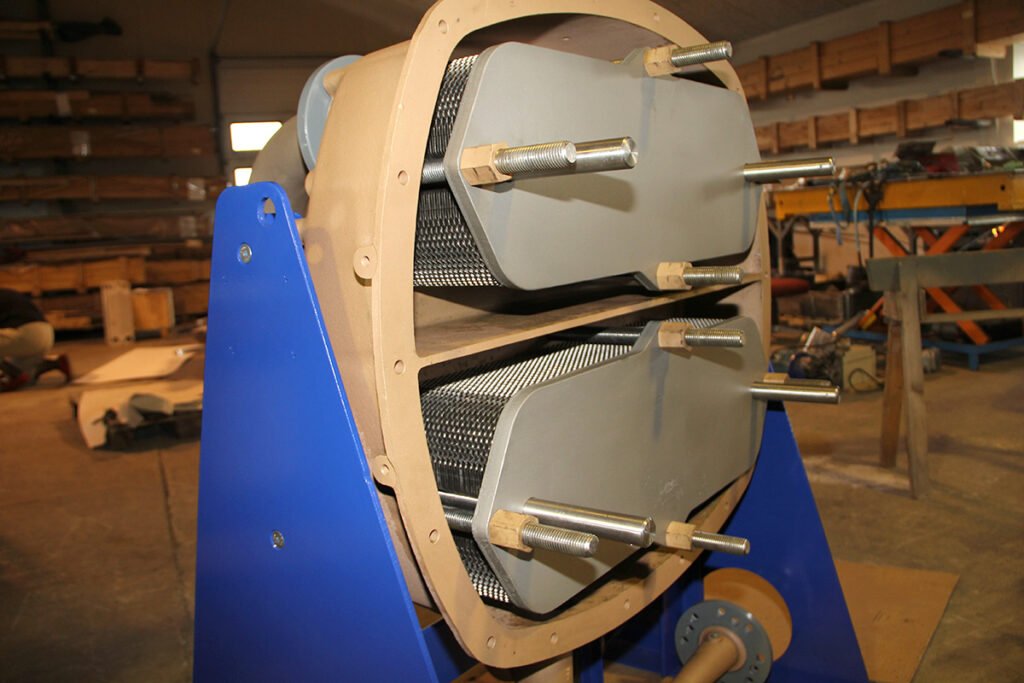
What Are The Causes For Low Production Of Fresh Water ?
Reasons of Low Production are following :-
- Ships draft is less.
- level of brine is too high.
- Filter before ejector pump is dirty .
- Faulty ejector pump- not developing enough pressure
- Faulty Ejector nozzle/ nozzle chocked
- Incorrect feed
- scale formation in evaporator
- shell temperature is too high
- scale formation in condenser
- condenser cooling water flow is reduced
- Condenser cooling water temp. too high
- Incorrect assembly of plates
- Leakage in plant like from pressure gauge, vent, distillate pump seal etc.
- Distillate pump faulty
- Faulty flow meter
- Faulty solenoid valve

